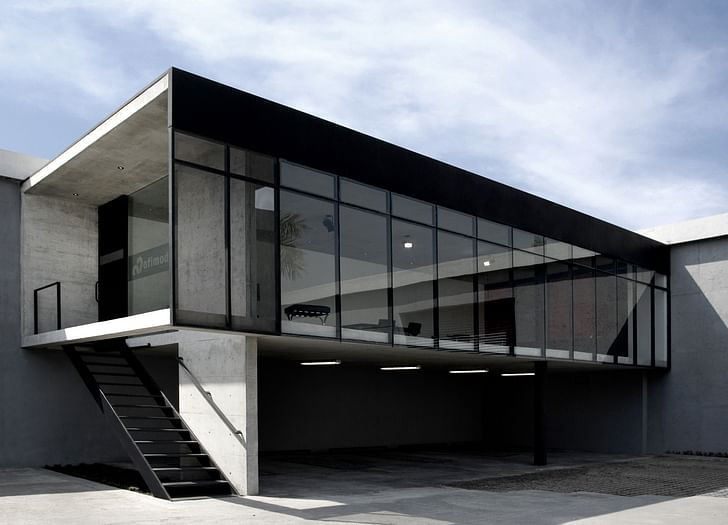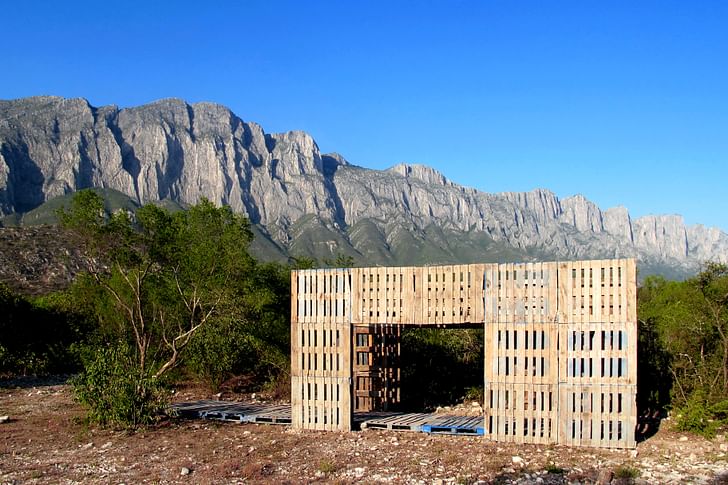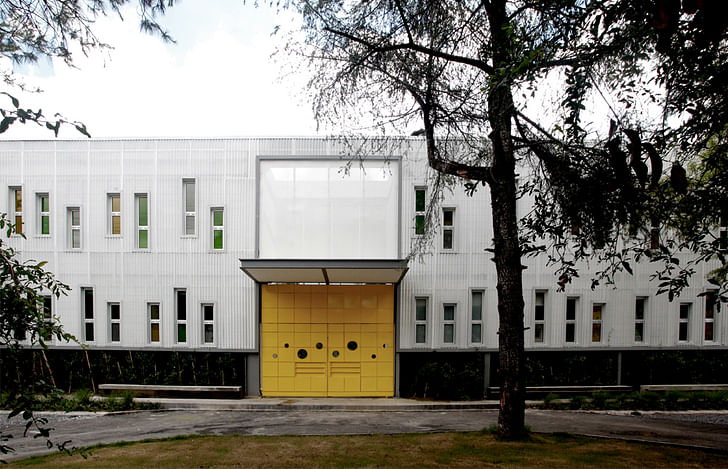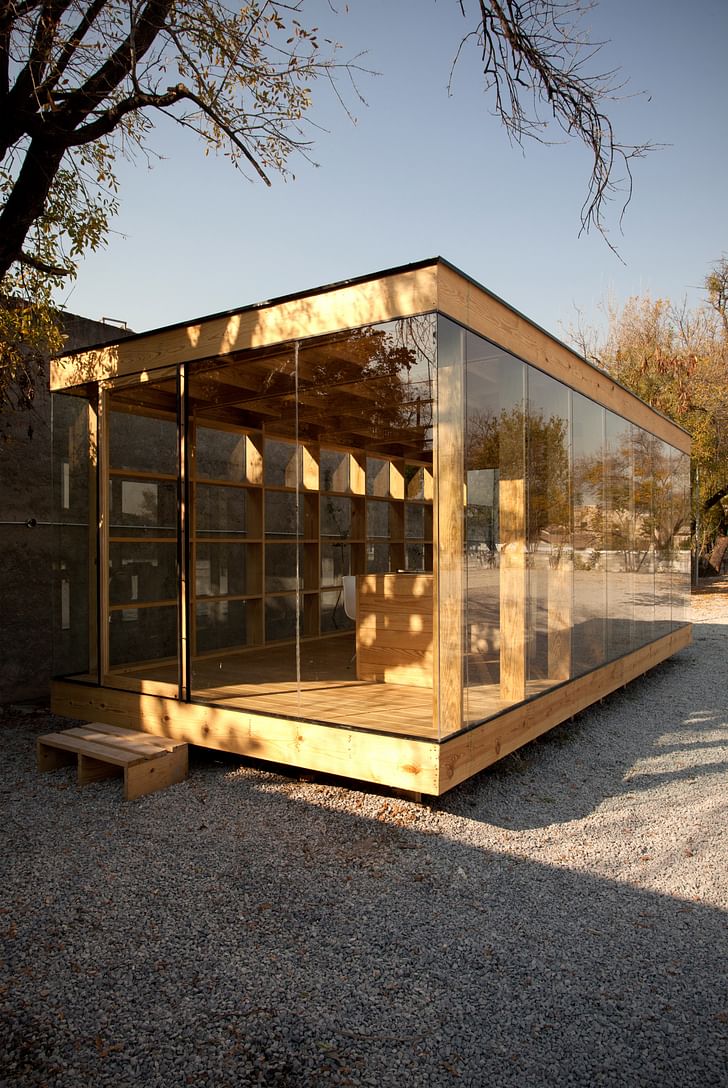

Located in Monterrey, Mexico, S-AR bills themselves as a collaborative Alternative Architecture workshop. Their work focuses on the design and development of architectural projects of several scales and typologies. The team works on projects that range from the designing of objects to experimental, social houses and educational buildings.
This week on Small Studio Snapshots, we talk with the team and discuss how keeping a small office allows them to take on projects that they find meaningful.
How many people are in your practice?
Currently the office is made up of four partners, two of us are in Monterrey where the architecture office is, another one is in Mexico City acting as a link with projects in the center part of the country and another in Baja California, also linking us with project opportunities in this region of Mexico. In the office in Monterrey we have a team of two young architects who are collaborators and an architecture student doing an internship. We expect a couple more students this year to come learn from the experience of being in the workshop and how we develop architecture at S-AR.
Why were you originally motivated to start your own practice?
It wasn’t really something we thought about much as a professional goal, but something that happened mainly because we knew each other since university and we've worked as a team since then. In addition to being partners, we’ve been friends for many years. Afterwards, through the university too, we met our youngest partner and our collaborators, since we were linked to it by teaching there for almost ten years and that’s how we’ve met the majority of the people that have passed through the studio, first from a teacher-student relationship and then as collaborators. We believe we’re still in a process of development because conditions have greatly changed since we started working independently. Additionally everything in Architecture takes a lot of time, it’s normal that the consolidation of a studio or workshop and the conformation of a team take a lot of years.


What hurdles have you come across?
The main obstacle we see for an architecture office is the irregularity of opportunities that come up to develop work, since these vary a lot by seasons. Sometimes there are many proposals and at others proposals have to come from us to generate our own work. Another obstacle for an office of our profile is finding interesting counterparts to develop projects. We’re interested in doing projects that generate and leave knowledge behind, and sometimes this isn’t easy to find in a consumerist society, since knowledge isn’t something that is often promoted or sought after as other more pragmatic goods. So that general lack of architectural culture in the society that surrounds us reduces the interesting occasions where architecture can be used in a good way to generate knowledge. However we’ve always been more interested in quality over quantity, so we know how to wait and distinguish the potential of a project over one with purely superficial interests. We’re interested in doing projects with a deep message, and working with people who know how to value that.

Is scaling up a goal or would you like to maintain the size of your practice?
At the moment we’re not interested in growing in size, but in experiences, and the current size of the office is good for that because it allows us to be close to each other and to the ideas, to the manufacturing and construction processes and to the buildings and sites, which is very important for us since a lot of our work emerges from the understanding of those resources that we get firsthand on site and from the people that we work with and help us construct our ideas. We’re more interested in changing the scale of the ideas when we do architecture than changing the scale of the buildings. A small building can have a great deal of architecture. There’s a lot to teach, reflect and communicate. It’s about the potential of the ideas and having the discipline to transform them into a project that’s coherent with that potential. Even if we, through our partners, get to do projects outside of Monterrey, in other parts of Mexico or outside of the country, we believe that’s not necessarily going to affect the size of the office. Of course the results could be different in each case, but the process of reading the site and thinking the project will be the same. We’re just gonna have to travel a bit more.


What are the benefits of having your own practice? And staying small?
We like the size of our practice, we feel comfortable this way because we believe that it allows us to be close to our collaborators and to the buildings, which adds quality to them. We like to share ideas in a direct way, and maybe if there were a lot of people in the office we would start losing that and everything would be more mechanical, less personal. We understand architecture as a personal intellectual activity that links and develops under different contexts and nurtures from the history of things, and that stretches further when discussed with the people that are close and condenses in that dialogue. It’s something personal but that grows among people, like a message that becomes richer and more defined little by little. I think that exchange gets lost when there’s much rotation of people in an office, or there are too many, because then only results get discussed and not so much the processes. We’re interested in the processes of thought and production being shared and enriched within the team.We understand architecture as a personal intellectual activity that links and develops under different contexts and nurtures from the history of things
Having our own practice gives us the freedom to choose our own path and the way we want to develop the ideas that get generated inside the practice, it gives us independence also regarding the time we use to do architecture. Although we know that a lot of factors and processes are alien to us, the time we take to reflect on what we do is exclusively ours. And thanks to that we are able to focus on projects that interest us and intellectually stimulate us, and not in those that have to be developed following an external guideline. Architecture is an independent journey, of personal and profound discovery, but one can walk as a team through that solitary path.

1 Featured Comment
This has been an awesome series, and this S-AR interview is no different. Please keep them coming...
All 2 Comments
This has been an awesome series, and this S-AR interview is no different. Please keep them coming...
I second that. I always go Small Studio Snapshots first. Keep up the good work, Archinect and studios everywhere!
Block this user
Are you sure you want to block this user and hide all related comments throughout the site?
Archinect
This is your first comment on Archinect. Your comment will be visible once approved.